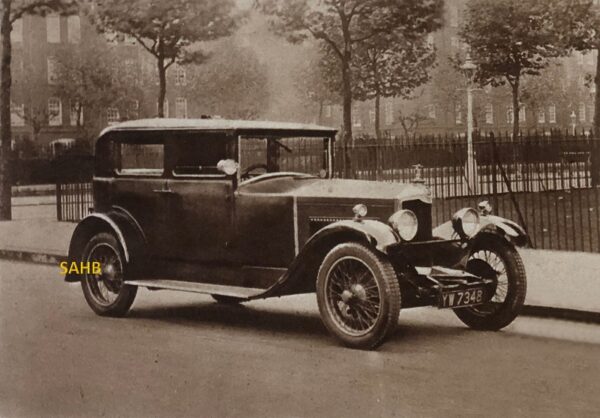
The post-WWI Crossleys were highly prized machines among drivers and motoring journalists. At the launch of this 15.7 h.p. Six the writer in The Autocar made a point of listing the considerable number of Crossleys that he had experienced since World War I – the 25/30, the 19.6, the 20/70 sports, the Fourteen (in fact a 15.6), and the 20.9. The latter was, in his opinion, “almost infinitely and quite incredibly better than the whole run of Crossleys preceding it.” But after a day with the new 15.7, the journalist was very taken by the car, only believing that the extra seating accommodation only available in the longer 20.9 chassis would be preferred by some, and that this extra space would require its bigger engine.
Unlike many rival manufacturers of high-quality cars, Crossley continued to use four-cylinder side-valve power units for all its models until the introduction of the 18/50 in 1925. This had a 2.6-litre, six-cylinder, overhead-valve engine, which was increased to 3.2 litres in 1928 for the 20.9hp model. In the same year came the smaller and lighter 15.7 h.p. six featured in our Snapshot (also marketed in the 1930s as the ‘2-Litre’ and ‘Silver’.) It gave similar performance to the 20.9 but better fuel economy. The 15.7 also had four-wheel Perrot brakes and a right-hand change, four-speed gearbox. It was available in several body styles, many built by Crossley itself. The model lasted until 1934, but only around 20 survive, many of the saloons having been re-bodied as tourers.
It is worth mentioning the origins of Crossley, set up i 1867 by two brothers, Francis and William, in Manchester as an engineering company. But it was in 1869 that they astutely acquired the UK and world (except German) rights to the patents of Otto and Langen of Cologne for the new gas-fuelled atmospheric internal combustion engine. These rights were extended in 1876 to the famous Otto four-stroke cycle engine. The changeover to four stroke engines was remarkably rapid with the last atmospheric engines being made in 1877.
Improvements to allow the use of volatile liquid fuels rather than just gas came in the 1880s, and Crossley acquired the rights to the diesel engine and made its first one in 1898. The company may have made such advances, but its advertising slogan harked back to early success: “Crossleys of gas engine fame”. The journalist writing the review of the new 15.7 was clearly smitten: he ended his report with the words: ‘I wonder how long it will be… before Crossley gas engines are advertised as being “As good as Crossley cars”?’
Image courtesy of The Richard Roberts Archive: www.richardrobertsarchive.org.uk







Leave a Comment